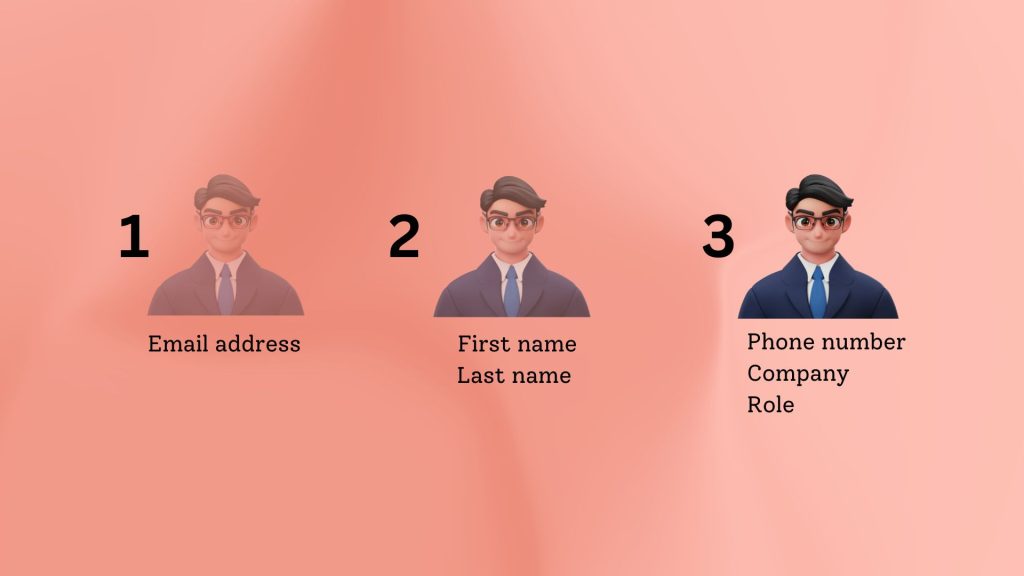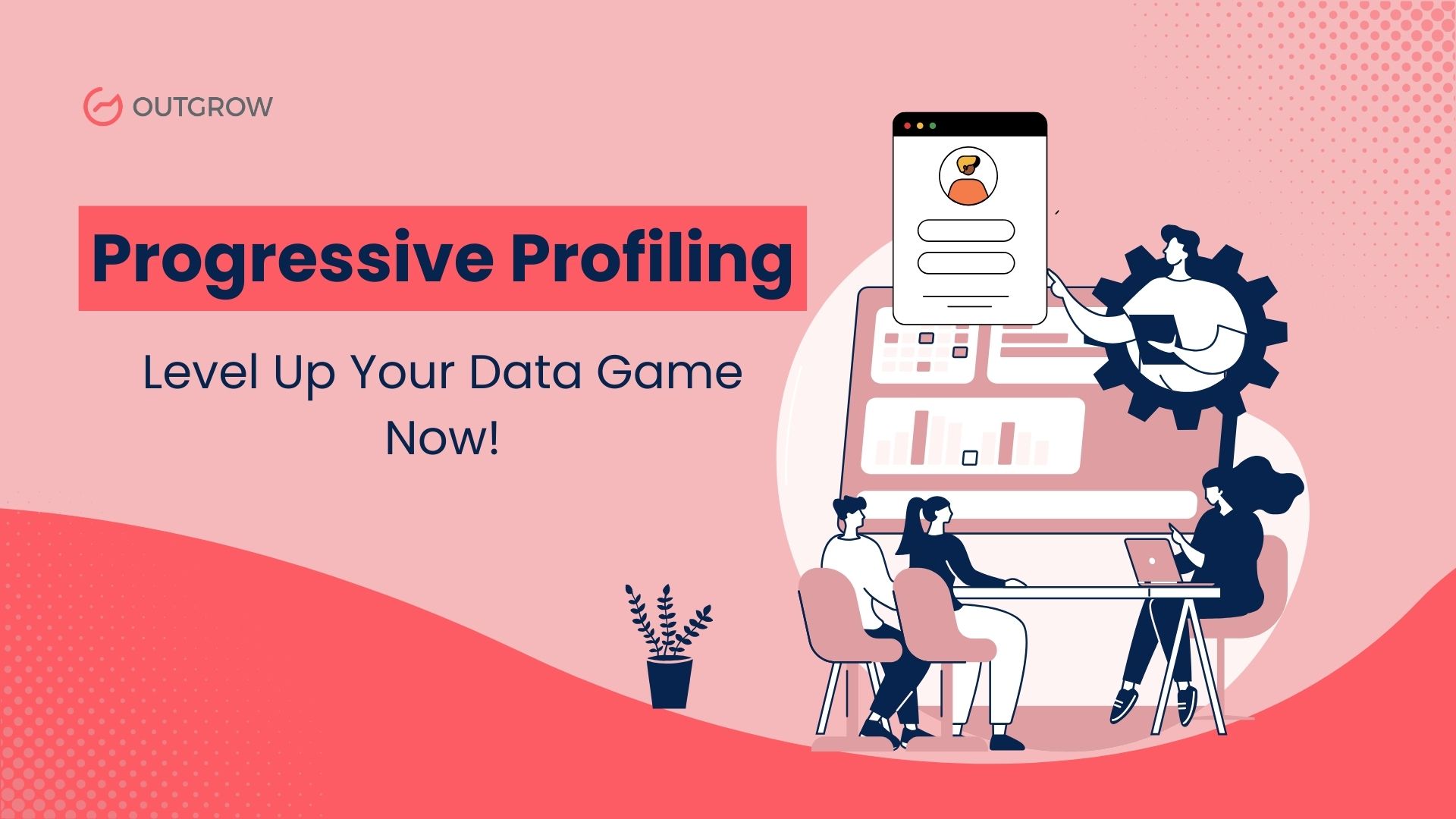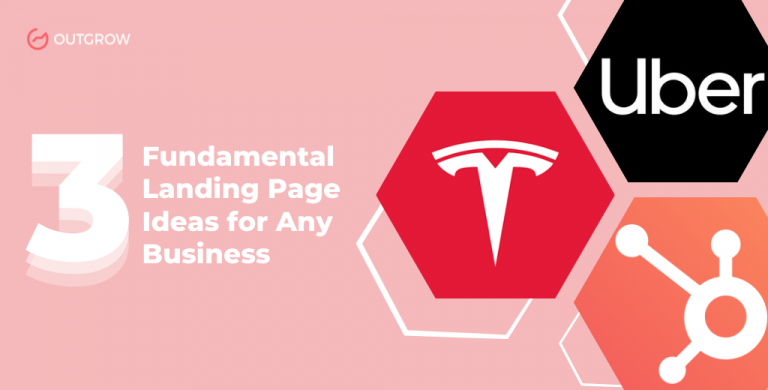Progressive Profiling: Level Up Your Data Game Now
Table of Contents
Ever visited a website and felt like you were filling out a never-ending form? Not fun, right? Well, your potential customers think the same way! Most people don’t want to spill all their secrets in the first chat with a website. That’s why they often bail out, which is not ideal for generating qualified leads.
Every business needs customers’ info, but rather than annoying them, why not do it the smart way? Enter the hero: progressive profiling!
It isn’t just a buzzword; it’s a game-changer! Why? Well, we’ll find it in this blog. However, let’s begin with the definition.
What Is Progressive Profiling?
Progressive profiling is a technique used in marketing automation to gather information about leads in small increments over time. Instead of asking for all the details at once, progressive profiling collects data gradually by prompting visitors with different questions on each visit or interaction.
The key advantage? No repetitive questioning. Once a lead provides essential details like email, name, and phone number, they won’t reencounter the same queries. Instead, on subsequent visits, the focus shifts to different aspects, such as company name, key goals, and more.
This method streamlines the lead nurturing process by gradually gathering specific data points, ensuring a smoother, more personalized interaction. In essence, progressive profiling allows marketing teams to collect a wealth of information about a lead without overwhelming them with extensive questioning in the initial interaction. It’s about finesse, ensuring a tailored approach that respects the user’s time and experience.
How Does Progressive Profiling Work

Progressive profiling operates by breaking down the data collection process into smaller, sequential steps. Let’s understand its working with a scenario.
Imagine you’re surfing through a website, and they want to know a bit about you. Instead of bombarding you with many questions right away, they start with just the basics, like your name and email, when you first visit. As you keep using the site, sometimes they might ask for a bit more info, but it’s always something new, not stuff you’ve already told them.
All the things you share are kept safe, and they use that info to improve your site experience. You might notice that the site seems to know what you like and gives you recommendations that match your interests because of the info you shared.
Here’s the cool part: you’re always in control.
They let you decide if you want to share more details or not. It’s like having a conversation where you share a bit more about yourself over time.
What Are the Benefits of Progressive Profiling
As mentioned before, progressive profiling has numerous benefits and can greatly enhance the user experience. Here are some key benefits of this technique:
Enhanced Customer Trust and Comfort
In a report by Cisco, 94% of organizations say consumers won’t purchase from them if their data is not adequately protected. With progressive profiling, customers can rest assured that their privacy and personal information are being taken seriously.
Allowing them to skip questions and provide only the necessary information, gives them a sense of control over what data they are sharing. This creates a level of trust between the customer and the company, as the customer feels respected and valued.
Improved Data Collection
Progressive profiling transforms data collection into a smooth, bite-sized process. Instead of bombarding customers with lengthy questionnaires, businesses extract insights gradually.
This not only reduces the burden on customers but also increases the likelihood of them providing accurate and valuable information. By breaking down data collection into smaller pieces, businesses can gather detailed and specific data over time rather than overwhelming customers with questions.
Personalized and Strong Customer Bonds
In a world where personalized content facilitates repeated purchases in nearly 78% of consumers, progressive profiling emerges as a hero. It enables businesses to craft tailored experiences for each individual. By delivering content and offers that resonate, engagement skyrockets.
Personalized campaigns become the secret sauce in demand generation, targeting the right audience for increased conversion rates. Moreover, understanding a customer’s preferences and keeping your approach customer-centric helps fine-tune communication frequency, avoiding the dreaded unsubscribe button.
Now that you know the benefits of progressive profiling, let’s dive into how to use it to gather data.
How to Use Progressive Profiling to Collect Data
Using progressive profiling is a simple and effective way to gather valuable customer data. Here are some steps you can follow:
1. Chart the Customer Journey
To effectively leverage progressive profiling for data collection, mapping out the customer journey along the ToFu-MoFu-BoFu spectrum is crucial.
At the top of the marketing funnel (ToFu), the primary goal is to introduce customers to your brand and initiate interaction. Prioritize gathering basic contact information, encouraging them to join your email list.
In instances where customers may resist providing contact details, consider alternative approaches. For example, inquire about their preferred social media platform and invite them to follow your brand on that platform. This way, you can still keep in touch and engage with them through their preferred channel.
As customers progress through the marketing funnel (MoFu and BoFu), they delve into more specific inquiries tailored to obtaining information that enables personalized content and offers.
For those who don’t know about Mofu and BoFu, MoFu is the middle of the funnel, where leads have already shown interest in a company’s products or services. And BoFu is at the bottom of the funnel, where leads actively consider purchasing.
For example, a hair salon might inquire about hair length, dye preferences, or hair type.
Utilize these responses to shape the content and frequency of your campaigns, ensuring more tailored and effective marketing. With correct mapping, achieving customer success is easy. This is because you can deliver relevant content to prospects and ensure their journey through the funnel smoothly leads them toward conversion.
2. Provide a Series of Premium Content
Gating content is a classic strategy but becomes a powerful tool for progressive profiling when implemented strategically.
Traditionally, gated content requires minimal information, often just name and email. Here’s how Kevin Bloom, Director of Marketing and Digital Marketing Consultant at Hinge, utilizes this strategy.
They began using progressive profiling several years ago and have witnessed significant growth in inbound leads and engagement. Website visitors who download a piece of their premium content willingly share their name, email, and industry.
When these visitors seek a second piece of content, the forms present fields for additional information, such as their role and company. This approach allows them to maintain short and less intrusive forms.
3. Opt for Interactive Emails
Interactive emails are a great way to collect data using progressive profiling. Instead of sending out traditional email blasts, try incorporating interactive elements. These elements include surveys, quizzes, polls, clickable hotspots, carousels, forms, CTAs, countdown timers, games, and personalized content.
These dynamic features make the email experience more interactive and appealing for users. Consider this exemplary case from Airbnb, showcasing an interactive survey email. The email adeptly communicates the purpose of the questionnaire, expressing a commitment to creating a positive impact in cities worldwide.
By seeking feedback, Airbnb aims to enhance the experience for recipients and make them feel more welcome in their properties. This will also help them gather some data about the recipients’ preferences and interests, allowing them to tailor their future marketing efforts accordingly.
4. Deploy Interactive Quizzes
Another interesting and interactive way to collect data is through marketing quizzes. Not only do they provide valuable information about customer’s preferences and interests, but they also offer an engaging experience for customers.
Create fun and relevant quizzes that align with your brand and products. This will encourage customers to share their answers on social media for added exposure. Additionally, use the results of these quizzes to personalize future interactions with customers based on their specific likes and dislikes. For example, you can create a quiz like this, “The Ultimate Summer Destination Quiz.”
This quiz can help you collect data on your customer’s travel preferences, budget, and interests. With this information, you can then target them with personalized emails or ads promoting vacation packages that align with their answers.
If you aren’t sure about creating such quizzes, then Outgrow can help you out. It’s a no-code tool to create interactive content, including surveys, contests, polls, assessments, chatbots, and more.
With Outgrow, you can easily customize and embed the quiz on your website or share it through social media channels. This helps you understand your customers better and increases engagement and conversions on your website.
5. Create Dynamic Web Forms
Dynamic web forms are a key component of progressive profiling, as they allow for the gradual collection of data over multiple interactions with customers. These forms should be designed strategically to ask for new information on each interaction, building upon what was previously gained.
For example, when visitors first come to your website, they might share basic info. When they return, you can ask for more details like job title or company size. And creating online forms and embedding them on your website can come in very handy at this point.
6. Collect Data Through Surveys
Surveys are another effective way to collect valuable data from customers. They can be targeted and customized to gather specific information about a customer’s needs, preferences, and behaviors. You can use surveys at different customer journey stages to track their interests and motivations.
Create short and simple surveys focusing on specific product or service aspects. For example, you can create a survey like this “Brand Performance Survey“.
This survey will help you understand how customers perceive your brand and what improvements they want. Also, surveys can be easily shared on social media platforms, allowing you to reach a wider audience.
Best Practices for Progressive Profiling
Now, that you know the basic workings of progressive profiling, let’s explore some tips to implement it successfully.
1. Pace Yourself
Imagine meeting someone new. You wouldn’t start with personal questions, right? Apply the same principle to progressive profiling. Begin with light, introductory queries to initiate a comfortable and gradual exchange of information. Remember, building trust takes time, so ensure your questions are non-intrusive and respect the user’s privacy.
2. Start Broad, Then Get Specific
Building on the analogy of making a new friend, think of the information you gather as layers. Begin with broad, general questions to establish a foundation. As the relationship grows, gradually delve into more specific details for a richer understanding. This way, you create a nuanced profile that reflects the diverse facets of your customer base.
3. Align with Customer Lifecycle Stages
Recognize that your customers are on a journey. Are they just discovering your brand, or are they long-term patrons? Tailor your questions based on their position in the customer lifecycle, ensuring relevance and resonance. By understanding their current needs and expectations, you can tailor your approach to better meet them where they are.
4. Pick Data Wisely, Like Your Battles
Consider your data collection as a strategic battle. Instead of bombarding users with numerous questions, choose your inquiries wisely. Opt for data that aligns closely with your objectives, ensuring each piece serves a purpose in your overall strategy. This approach not only streamlines the process for users but also ensures that the data you collect is meaningful and actionable.
5. Create a Consolidated Customer View
Envision your customer data as puzzle pieces. The goal is to connect these pieces and form a comprehensive picture. By consolidating information, you gain a holistic view of your customer, enabling more informed decision-making. Regularly update and refine this consolidated view to ensure it remains reflective of the dynamic nature of your customer relationships.
6. Use Interactive Content
Beyond just collecting data, think of interactive content as a way to make the process enjoyable. Incorporate quizzes or surveys that not only provide valuable insights but also engage users actively. It’s about turning data collection into an interactive and enjoyable experience.
Consider leveraging experiential and gamification elements to make the process not only informative but also entertaining, encouraging increased participation. If you want to know how to generate leads via interactive content, then this video can help you out.
7. Review and Revise
Like any successful strategy, ongoing assessment, and adaptation are key. Regularly review the data collection process, consider changes in customer preferences, and adjust your approach accordingly. It’s about staying nimble and responsive to evolving needs. Periodically seek feedback from users on the data collection experience, ensuring that it remains user-friendly and aligns with their expectations.
Progressive Profiling Examples and Use-Cases
Let’s delve into some real-world examples and use cases that showcase the versatility of this technique.
1. Prompting Users Post-Login
A widely adopted approach involves presenting an optional form to users after they log in, strategically timed a few days post-signup to avoid overwhelming users.
A shining example is Atlassian’s direct profiling in Jira. Upon logging in, users are gently queried about their company’s sector, seamlessly enriching the user database. This data helps customize Jira templates, making them more relevant and efficient for users in specific industries
2. Completing Profiles at Users’ Convenience
Progressive profiling forms are typically optional, minimizing intrusion. An alternative method is to allow users to complete their profiles at their convenience within the account settings.
Ikea employs indirect progressive profiling, seamlessly collecting data about customers’ homes—size, characteristics, and details about the occupants. This strategy facilitates a user-friendly, frictionless data collection process.
3. Leveraging Newsletters
Beyond forms, newsletters emerge as an effective tool for progressive profiling, enticing users with information and incentives to complete their profiles. Airbnb adopts direct profiling via newsletters.
A few days post-signup, users receive a thoughtful nudge to complete their profiles and know enticing benefits that underscore the platform’s value. Incorporating progressive profiling into different business areas requires a thoughtful blend of timing, user experience, and incentives.
Conclusion
This brings us to the end of the progressive profiling journey. By now, you must have understood that it’s a win-win strategy for both businesses and customers. As you embark on this journey, remember to keep it simple and non-invasive.
Don’t forget to add interactive content, like quizzes or surveys, to keep the process engaging and fun. And remember, you can always use Outgrow to create interactive content! Want to give it a try? Try its 7-day free trial today without giving any credit card details!
FAQs

With a knack for turning ideas into compelling content, Meenakshi works as a full-time content writer at Outgrow. Apart from creating content that connects with readers, she loves to immerse herself in books, explore new destinations, and let loose on the dance floor.



